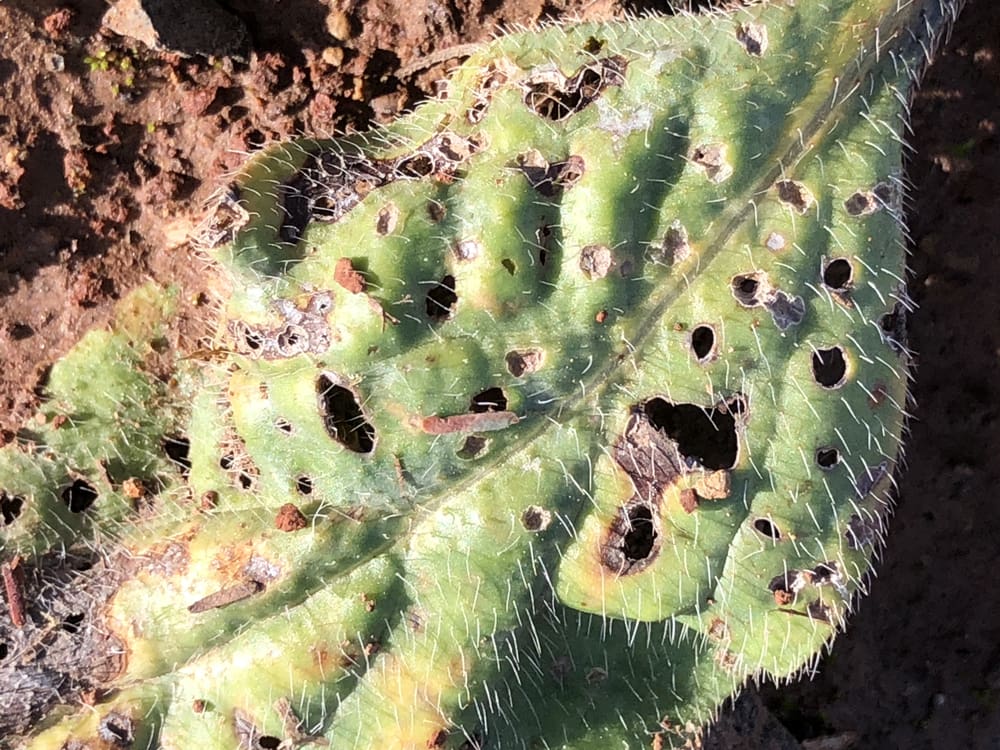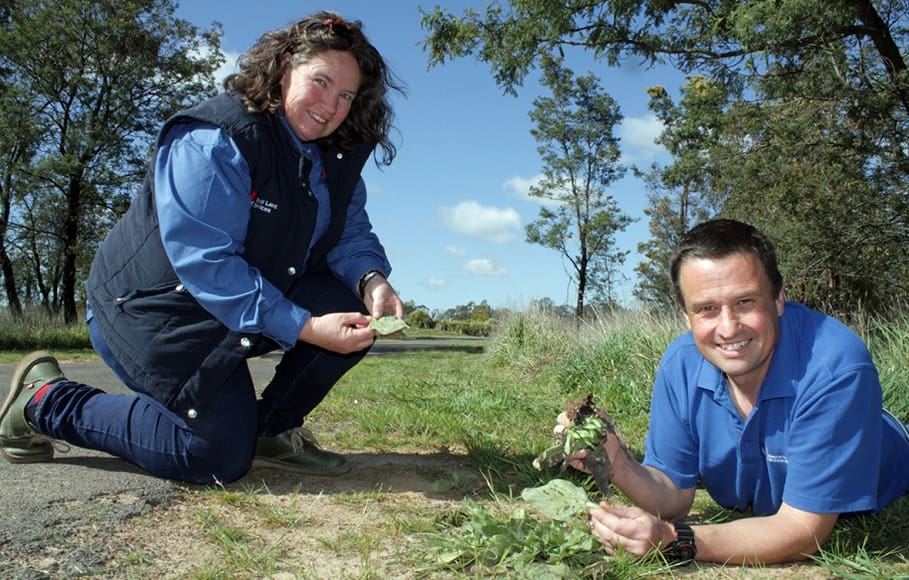
Weevil shot holes in a rosette of Paterson’s curse.
BUOYANT conditions across New South Wales have seen a population boom in biocontrol agents, including crown and root weevils which can kill Paterson’s curse.
NSW DPI weed biocontrol scientist, Andrew McConnachie, said producers could save money and boost weed control this spring by checking Paterson’s curse plants for insect damage before they spray weeds.
“The weevils are back in force this spring, after drought conditions reduced biocontrol agent populations, and now they have the numbers to make an impact on weeds,” Dr McConnachie said.
“We suggest producers inspect Paterson’s curse infestations and look for small shot holes in rosette leaves, which are evidence of crown and root weevil damage.
“If you find holes in the rosettes, leave the weevils to do the job and don’t spray Paterson’s curse.
“Biocontrol agents will be without a food source and their numbers will drop if weeds are sprayed now.
“With the right population levels crown and root weevils can kill Paterson’s curse plants and its close relative, viper’s bugloss.
“Other biological control agents, a leaf mining moth and a flea beetle, help too by reducing the growth of both weeds.”

Central Tablelands LLS regional weeds coordinator, Marita Sydes, and NSW DPI weed biocontrol scientist, Andrew McConnachie, find evidence of biocontrol agent damage to Paterson’s curse plants near Orange.
IPM programs
Currently six established Paterson’s curse biocontrol agents are causing significant damage to the weed and biocontrol remains an important component of integrated weed management programs.
Central Tablelands Local Land Services (LLS) regional weeds coordinator, Marita Sydes, said once their presence was confirmed landholders could take care of biocontrol agents through grazing management and selective spraying.
“The insect biocontrol agents feed above and below ground parts of the plant and are susceptible to harm from grazing animals,” Ms Sydes said.
“Paddocks once overflowing with toxic Paterson’s curse are no longer a feature of our landscape. The weed now exists in fragmented, isolated populations, thanks to the biocontrol program.”
The Paterson’s curse national biocontrol program has been an outstanding success, with a net present value of $1.2 billion in 2006, clearly that figure is substantially higher in 2020.
Source: NSW DPI

If we don’t spray the “patto”, what happens with the cape weed?